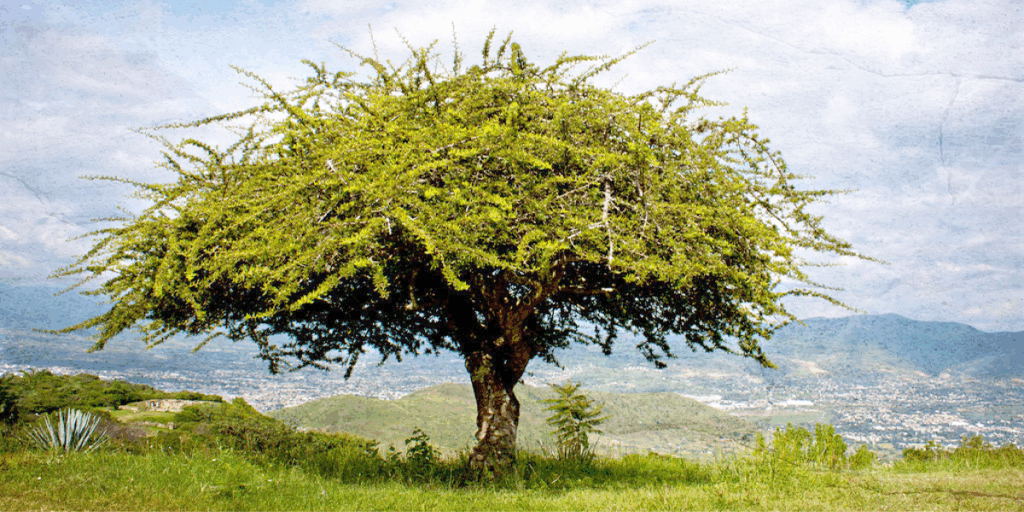
Ailanthus glandulosa
Latin name: Ailanthus glandulosa
Short name: Ail
Common name: Tree of Heaven | Chinese Sumach | Chinese Ailanthus | Varnish Tree | Copal Tree
Primary miasm: Psoric Secondary miasm(s): Syphilitic
Kingdom: Plants
Family: Simaroubaceae
- Symptomatology
- Remedy Information
- Differentiation & Application
Ailanthus glandulosa is a fast-growing deciduous tree native to China, now widely naturalised across Europe and North America. Known for its resilience in poor soils, it is often considered invasive. The leaves and bark have a strong, unpleasant odour when crushed. In Chinese traditional medicine, parts of the tree have been used for diarrhoea, dysentery, and parasitic infections. In homeopathy, the fresh bark of young twigs is macerated in alcohol to produce the mother tincture. The remedy’s sphere of action is profound in malignant, adynamic, and septic states, especially in scarlatina maligna, diphtheria, and low fevers with profound prostration, dusky rash, and a tendency to haemorrhage.
In traditional Chinese medicine, the bark (Chun Pi) is used for chronic dysentery, intestinal bleeding, and as an anti-parasitic. The tree’s wood is used for low-grade timber, and its bark contains astringent tannins. Due to its rapid growth, it has also been planted for erosion control and as an ornamental, though its invasive tendencies are notorious.
The remedy’s pathogenesis is derived chiefly from toxicological effects and clinical observations during epidemics of malignant scarlet fever and diphtheria in the 19th century [Hering, Allen]. No formal Hahnemannian proving exists; rather, its materia medica is compiled from poisoning cases and therapeutic records.
- Blood and capillaries – Septic states with haemorrhagic tendency [Clarke].
- Skin – Dusky, livid eruptions in malignant fevers.
- Mucous membranes – Foul, ulcerative inflammation of throat, mouth, and nasal passages.
- Nervous system – Prostration, low muttering delirium.
- Circulatory system – Tendency to collapse with feeble pulse.
- Glandular system – Enlargement and tenderness of cervical and parotid glands.
- Cool air and a well-ventilated room
- Cold applications to head in high fever
- Rest and lying quietly in a darkened room
- Slight elevation of head during dyspnoea
- Warm, close rooms (increases delirium and oppression) [Hering]
- Motion or exertion (hastens collapse)
- Warm drinks or food (nausea, aggravation of throat pain)
- Nighttime (delirium, restlessness worse after midnight)
- Septic or epidemic influences
- Baptisia tinctoria – Dusky, besotted appearance, stupor; more muscular soreness and decomposition odour.
- Lachesis mutus – Dark, purplish throat, great prostration; but more marked left-sidedness and intolerance of touch.
- Apis mellifica – Oedema of throat, shiny swelling; more stinging pains.
- Arsenicum album – Offensive discharges, great prostration; more restlessness and burning pains.
- Complementary: Baptisia, Lachesis in septic fevers.
- Antidotes: Camphora, strong coffee (in medicinal overdose).
- Follows well: Belladonna (when rash turns dusky), Rhus toxicodendron (in septic complications).
- Precedes well: Arsenicum album in collapse.
Ailanthus glandulosa represents the collapse state of malignant disease: dusky, mottled rash; foul ulceration of mucous membranes; offensive discharges; and overwhelming prostration. It is suited to the most malignant types of scarlet fever, diphtheria, and other septic states, especially when rash is imperfect or receding and the patient is sinking.
Particularly valuable in scarlatina maligna with livid rash, foul throat, and rapid collapse [Hering]. In diphtheria, indicated when the exudate is dark, foul, and ulcerative, and the pulse is failing. Works best in low to medium potencies during acute septic states, repeated according to the urgency of symptoms.
Mind
- Delirium, low muttering
- Stupor, difficult to arouse
Head
- Headache, congestive, in malignant fevers
- Face, dusky-red
Mouth / Throat
- Ulceration, throat, malignant
- Odour from mouth, offensive
- Tongue, brown or black centre, red edges
Skin
- Rash, scarlatina, dusky
- Skin, mottled, septic states
- Petechiae in malignant fever
Generalities
- Prostration, extreme, septic states
- Offensive discharges
- Septicaemia, adynamic fevers
- Hering, C., Guiding Symptoms of Our Materia Medica – Clinical observations in malignant scarlatina; description of dusky rash and offensive discharges.
- Allen, T. F., Encyclopaedia of Pure Materia Medica – Toxicological effects and epidemic case reports.
- Clarke, J. H., A Dictionary of Practical Materia Medica – Affinities for septic states, keynotes in malignant throat disease.
- Boericke, W., Pocket Manual of Homeopathic Materia Medica – Summary of malignant fever indications and modalities.
